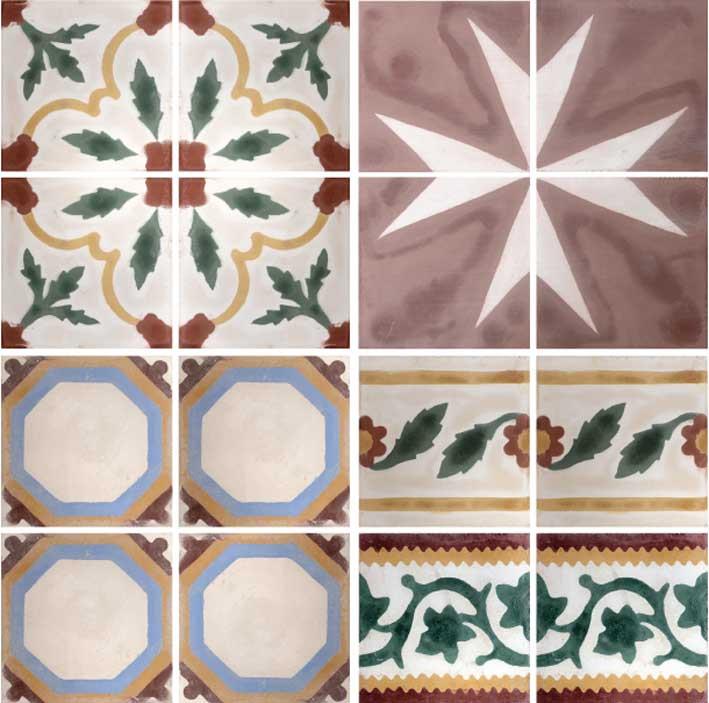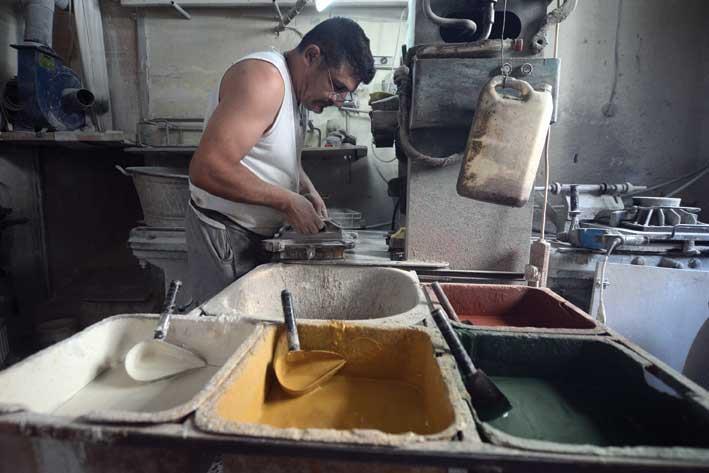They are practically a signature of every old Maltese house, immediately discernible and identifiable through a particular palette of colours and geometric shapes. They adorned the floors of my childhood home and I spent hours creating all sorts of games inspired by their patterns, jumping from one tile to the next imagining unfathomable consequences should I miss the spot where I'd have to land.
I am, of course, talking of the traditional, patterned, Maltese cement tile. This vernacular staple, although at times often under-rated, may be said to form a very small part of the nation's unique, visual, architectural identity. There is no denying that it is a subject that instils a subtle sense of nostalgia in me.

The history behind these tiles and the practice of making them is somewhat enigmatic. In order to try and uncover some context, I consulted architect Adrian Abela who, in 2014, worked on and created an artistic installation using primarily these tiles as his medium.
The origin of these tiles can probably be traced back to Turkey during the reign of the Ottoman empire and their use and production technique were at some point taken to Spain. It is interesting to note that the use of patterned cement tiles in Malta is a deceptively young practice. I was quite surprised to learn that they have been used locally only for the last 300 years. The number of artisans still making them is, however, dwindling. To better understand what it takes to make these tiles, I paid a visit to one of the last remaining Maltese tile-makers still using the same production methods that were used when the manufacture of these tiles in Malta began centuries ago.
In San Gwann's bustling main road, packed snugly between a plethora of different shops and restaurants, lies Chris Colombo's little workshop, practically unchanged since the time his father was making cement tiles in exactly the same location. Upon entering this atelier it becomes immediately clear that this is a space where things are created and not simply just sold.
By the time I arrive, Chris is busy cleaning his tools after a day's work and he reluctantly gives me his white powdered hand to shake. I sit down at a work bench and am given a marble slab on which to put my notebook so I can write more comfortably and Chris immediately launches into a description of the process used to make these tiles.
Chris has been making these tiles for over three decades and began learning the trade from his father from the young age of 12. He explains that the tiles are made from a cocktail of which powdered marble, white cement and colour pigment are the main ingredients and the three tools needed to create the tiles are:
il- plakka - a mask or mould that is used to give the tile its particular design and pattern.
il-kwadru - a brace or support that keeps the concoction together as it sets, acting as a container of sorts.
It-tampun- an extremely smooth back plate that is placed over the mix and upon which pressure is applied.

Each coloured section of every tile is poured individually, gently releasing the viscous, colourful mixture from the "sasla" (a small container). The consistency has to be just right in order to achieve the best results and a variety of factors can alter the aesthetic and final appearance of a tile as it is being formed. The temperature, level of humidity and variations in the mixture - to name but a few - can all be responsible for a tile being thrown on the reject pile.
It is important to keep in mind that these tiles are individually made and are not produced in batches. Chris will know immediately if a tile does not fit his desired level of quality and, despite his years of experience, occasional tiles are rejected. These then serve as an indication that some part of the process needs to be adjusted to cater for the current environmental conditions.
It is already obvious that this is a laborious process requiring a lot of patience. Chris produces only about 10 miles an hour - a number that, of course, depends on the complexity of the commissioned design. On average, this amounts to three square metres a day. A quick calculation reveals that, so far, Chris has made over six hundred thousand tiles by hand. Some of the designs or moulds he uses are centuries old and have tirelessly replicated the same patterns countless times by now.
When asked how the production process has changed over the years, I am told that the original practise was to use ordinary beach sand and that this has now been replaced with marble powder and that pressure on the tiles used to be applied manually and now a machine is used. These are the only two changes that have been made over the centuries, with everything else being practically the same.

Chris shares with me his concern that he may be the last of his generation to practice his trade. It is with a visible degree of disappointment that he tells me his profession may very well die out within the lifetime of his children. Interestingly enough, this is not because of a lack of interest in the product itself, in fact sales have hardly reduced since Chris has been making the tiles. The issue is finding dedicated people who are willing to take on such a physically consuming job that requires significant patience and finesse.
We quickly go through the variety of designs available. The names used to distinguish one tile from another are really quite something: 'Il-bettiegħa' (the melon), 'Għajn il-baqra' (the cow's eye), and 'Sieq it-tiġieġa' (the hen's leg) to name a few. He finally shows me the drawers where the colour pigment is kept and it looks like someone squeezed a rainbow in powdered form into a drawer.
As a product, the Maltese tile it is quite durable and improves with age. Certain colours, however, are more likely to fade, which is one of the reasons why blue is not used much any more. It is recommended that new cement tiles are polished since this prevents staining; tiles do polish naturally but this takes over 10 years. Since they are made to order, the customer has the option of customising the colour and design combination to their liking, meaning that you can truly have a unique feature in your home. Considering that each of these tiles is hand-made, they are not prohibitively expensive, in fact they are on par with certain mass-produced tiles on the market.
Chris does not stamp or mark the tiles he makes. After having talked to him, I think that the quality of his work and the pride he takes in making the tiles is sufficient signature of his work.
Columbo Maltese Tiles, 37 Naxxar Road, San Gwann.
Tel. 21380414 or 79049696. www.colombomaltesetiles.com